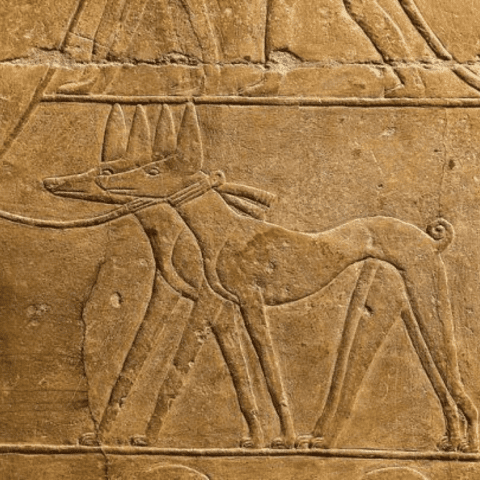You might be surprised to learn that the ancient dog breed has its roots in the ancient Mesopotamian Empire, where dogs were first domesticated around 12,000 years ago. This remarkable fact is just the beginning of the breed’s fascinating story. As you explore the history of this ancient breed, you’ll discover more intriguing details about its unique physical characteristics, shaped by thousands of years of adaptation to new environments. But that’s not all – there’s more to uncover about this loyal companion’s significant role in human history, and it’s about to get really interesting.
Origins of the Ancient Breed

As you explore the history of this ancient breed, you’ll discover that its origins can be traced back to the ancient Mesopotamian Empire, where archaeological evidence suggests that dogs were first domesticated around 12,000 years ago. This region, which corresponds to modern-day Iraq, was a hub for ancient civilization, and it’s likely that dogs were first bred to assist with hunting and guarding. Over time, these early dogs migrated with their human companions to new regions, giving rise to an ancient migration that would shape the breed’s development. As they traveled, these dogs were often isolated from other canine populations, leading to a process of breed isolation that would ultimately define the breed’s unique characteristics. This isolation, combined with the challenges of adapting to new environments, helped to strengthen the breed’s resilience and intelligence. As you dig deeper into the history of this ancient breed, you’ll uncover a rich tapestry of migration, adaptation, and evolution that has resulted in the remarkable dogs that exist today.
Unique Physical Characteristics
You’ll notice that this ancient breed boasts a distinctive physical appearance, characterized by its robust build, wedge-shaped head, and erect ears, which have been honed over centuries to thrive in diverse environments. The breed’s athletic body proportions are evident in its deep chest, well-sprung ribs, and strong, muscular limbs. Its coat patterns are equally striking, featuring a thick double coat with a soft undercoat and a harsh, straight outer coat that sheds snow and ice with ease. The coat’s color palette is equally impressive, ranging from rich fawn to dark gray, often with a distinctive white mask on the face. As you observe this breed, you’ll be struck by its overall balance and harmony, with each physical characteristic working in tandem to create a dog that’s both beautiful and functional. Whether working in the frozen tundra or lounging by the fire, this ancient breed exudes a quiet confidence and sense of belonging, making it a true marvel of canine evolution.
Loyal Companions Throughout History
Throughout history, this ancient breed has faithfully accompanied humans on hunting expeditions, provided comfort in times of war, and offered solace in the quiet moments of everyday life. You’ve likely heard stories about their loyalty and bravery, and it’s no wonder they’ve earned the Royal Treatment in many cultures. As you explore deeper into their history, you’ll discover the significant role they’ve played in shaping human experiences.
- Ancient Companions: They were often depicted in ancient art and literature as loyal companions, highlighting their importance in ancient societies.
- War Heroes: This breed has been known to stand by their human counterparts during times of war, providing comfort and support in the face of danger.
- Hunting Partners: Their exceptional hunting skills have made them valuable assets in hunting expeditions, earning them a special place in human history.
- Royal Favorites: In many cultures, this breed has been favored by royalty, receiving the Royal Treatment and enjoying a life of luxury.
As you explore the rich history of this ancient breed, you’ll come to appreciate their unwavering loyalty and the significant impact they’ve had on human history.
Frequently Asked Questions
Can Ancient Dog Breeds Be Used for Modern Search and Rescue Missions?
You can harness the instincts of ancient dog breeds for modern search and rescue missions, leveraging their keen senses for Disaster Response and Wilderness Survival, making them invaluable assets in crisis situations.
Do Ancient Dog Breeds Require Special Dietary Needs or Restrictions?
As you venture into the world of ancient dog breeds, you’ll find they’re like fine-tuned machines, requiring precise fuel. Their ancient nutrition demands a primitive diet, mirroring their ancestral heritage, with whole foods and minimal processing to thrive.
Are Ancient Dog Breeds Prone to Specific Health Issues or Diseases?
You’ll find that ancient dog breeds are prone to specific health issues due to genetic predispositions and breed vulnerabilities, such as hip dysplasia and eye problems, which you’ll want to monitor and address early on.
Can Ancient Dog Breeds Be Trained for Agility and Competitive Sports?
You’ll be thrilled to know that, with patience and consistency, you can train your ancient dog breed for agility and competitive sports, considering their breed characteristics and agility limits.
Are Ancient Dog Breeds Recognized by Major Kennel Clubs and Registries?
“Blood is thicker than water,” and when it comes to recognition, ancient dog breeds need to meet specific standards. You’ll find that major kennel clubs and registries, like the AKC, recognize these breeds based on breed classification and strict recognition standards.
Conclusion
As you’ve explored the ancient dog breed, you’ve discovered the richness of its history and characteristics. Imagine a scene from ancient Mesopotamia, where a loyal companion dog sits by its owner’s side, its wedge-shaped head and striking coat patterns a symbol to its adaptability. This breed’s enduring loyalty has been a constant throughout human history, earning it a special place in our hearts and homes.
